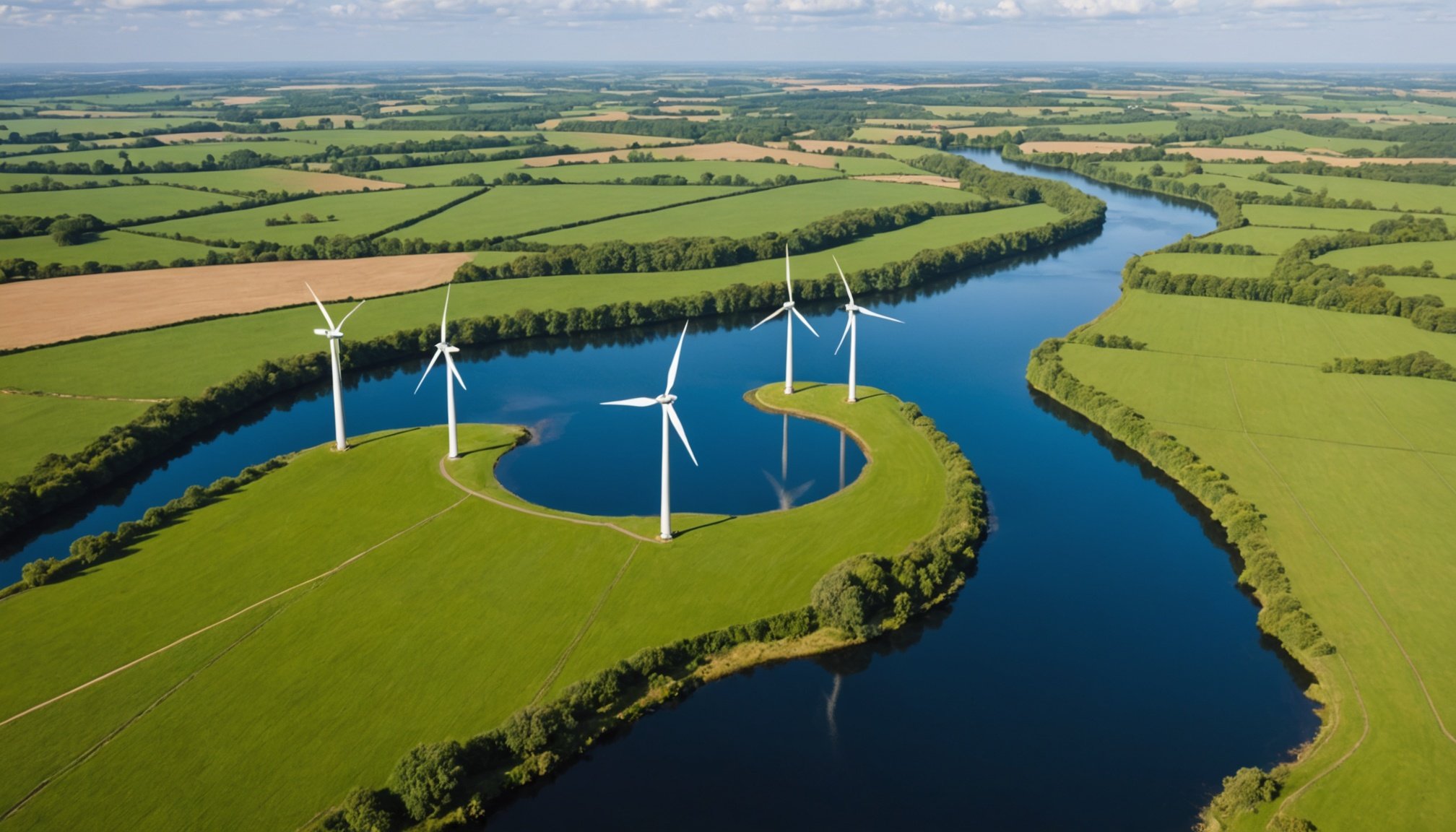Overview of Environmental Impact Assessments in the UK
The Environmental Impact Assessments (EIAs) play a crucial role within the renewable energy sector in the UK. Primarily, they are designed to assess potential environmental effects and ensure sustainable development. The framework encompassing UK regulations for EIAs is comprehensive, aimed at minimising adverse effects on both the environment and communities.
A pivotal UK regulation governing these assessments is the Environmental Impact Assessment Regulations 2017. These regulations stipulate mandatory guidelines for evaluating proposed projects, especially renewable energy initiatives. For instance, solar farm projects must undergo an EIA to understand their environmental impacts.
Also to read : Mastering compliance in remote work: a guide for uk virtual assistant services
The EIA process involves key steps to ensure thorough evaluation. Initially, a scoping stage assesses what environmentally significant impacts exist. Following this, an environmental statement is prepared, analyzing potential effects alongside proposed mitigation measures. Public consultation forms an integral part of this process, allowing community members to present concerns or support.
Ultimately, EIAs in the renewable energy sector aim to balance project ambitions with ecological protection. They encourage sustainable development by highlighting environmental considerations and ensuring projects adhere to strict UK regulations aimed at protecting nature and societal well-being.
Also read : Master of ai : elevate your career with essential skills !
Navigating Regulatory Requirements
In the complex landscape of regulatory compliance, adhering to UK laws is essential for conducting effective Environmental Impact Assessments (EIAs). Navigating these environmental regulations is vital to ensure projects are legally sound and environmentally responsible.
Key Regulations Influencing EIAs
Several major UK laws significantly impact EIAs. The Environmental Impact Assessment Regulations 2017 set clear criteria for project evaluation. The Planning Act 2008 further guides developments that require detailed assessments, such as large-scale renewable energy initiatives. Understanding these laws is essential for compliance and successful project execution.
Role of Environmental Agencies
Agencies like the Environment Agency play a crucial role in EIAs. They are responsible for enforcing UK laws, providing guidance, and ensuring projects align with environmental objectives. Their oversight helps maintain transparency and accountability throughout the EIA process.
Updating Assessments According to New Regulations
Continuous monitoring and assessment updates are paramount as regulations evolve. Regular updates ensure ongoing compliance and adapt projects to new environmental challenges. By staying abreast of regulatory changes, developers can proactively adjust strategies, safeguarding both the environment and project success.
Tools and Resources for Effective EIA Management
Managing Environmental Impact Assessments (EIAs) efficiently necessitates leveraging the right tools and resources. Specialized software plays a pivotal role in streamlining the assessment process. These digital solutions aid in data collection, analysis, and reporting, ensuring a thorough and efficient evaluation. Such tools facilitate the organization and accessibility of information, making the management of complex EIA projects more manageable.
An array of assessment resources is available to professionals involved in EIAs, providing crucial guidance and methodologies. Access to these resources helps ensure that assessments are conducted following the latest industry standards and scientific practices. Detailed documentation and case studies illustrate successful EIA applications, assisting professionals in adopting best practices.
To sharpen expertise, training and workshops offer valuable opportunities for professionals working in the renewable energy sector. These educational resources focus on enhancing skills in various aspects of EIA management, emphasizing both theoretical knowledge and practical application. Engaging in these programs allows renewable energy entrepreneurs to stay abreast of new developments, ultimately leading to more successful and sustainable projects. Such comprehensive resource utilization is critical for effective EIA management, fostering improved environmental and project outcomes.
Stakeholder Engagement Strategies
Involving stakeholders early in the Environmental Impact Assessments (EIAs) process is essential to foster transparent and mutually beneficial outcomes. Stakeholder engagement ensures that diverse perspectives are considered, leading to more informed and inclusive decision-making. Engaging stakeholders from the onset helps manage expectations and addresses concerns proactively, thus reducing potential conflicts.
Effective community involvement requires deliberate strategies to communicate complex information accessibly. Organising informative sessions and using clear visuals are practical methods to convey project details and potential impacts. This approach encourages open dialogue and promotes understanding among all parties involved.
Public consultation is a mandated component of the EIA process, ensuring stakeholders’ voices are heard. Engaging an interdisciplinary team can enhance this engagement, as varied expertise provides comprehensive insights into environmental and societal implications. Each stakeholder’s feedback is crucial for shaping projects that align with both ecological sustainability and community interests.
Several case studies showcase successful stakeholder engagement techniques, such as the use of interactive digital platforms for real-time feedback. These platforms have demonstrated effectiveness in improving communication and ensuring stakeholder concerns are addressed promptly. By integrating these practices, renewable energy projects can achieve broader acceptance and smoother implementation.
Challenges Faced by Renewable Energy Startups
Navigating the realm of renewable energy presents unique challenges for startups, specifically in managing Environmental Impact Assessments (EIAs). These young enterprises often grapple with budget constraints that impact EIA quality. Limited financial resources can lead to a lack of comprehensive studies, which are vital for understanding potential environmental repercussions. This, in turn, poses a risk to projects if assessments are insufficiently thorough.
Common obstacles include logistical hurdles and resource limitations, which can impede progress. Startups may struggle to allocate enough personnel or tools for effective EIA management. The complex nature of EIAs requires a detailed approach, necessitating an efficient strategy to overcome these barriers.
To address these issues, startups should focus on risk management. By identifying potential challenges early in the project lifecycle and adopting adaptable methods, companies can better mitigate these risks. Some strategies include forming partnerships with experienced firms or investing in tech solutions to streamline processes. Successfully managing these hurdles aids in achieving compliance and aligning with sustainability goals.
Understanding and addressing these startup challenges is critical in fostering innovation and sustainability within the renewable energy sector, enabling startups to advance their green initiatives effectively.
Innovative Approaches to Sustainable Practices
Implementing innovative practices is essential for enhancing environmental sustainability without compromising project goals. One exemplary approach involves utilising advanced materials, like carbon-neutral concrete, which reduces the carbon footprint of construction projects. Renewable energy efforts have also embraced eco-friendly solutions, such as integrating solar panels manufactured from recyclable materials, thereby emphasising resource efficiency and waste reduction.
Balancing ambitious project goals with ecological impacts requires a meticulous approach. Developers often employ simulation software to predict environmental effects, which aids in fine-tuning project designs. This proactive strategy not only safeguards natural ecosystems but also aligns projects with evolving sustainable practices standards. Compliance is a crucial aspect of implementing innovative solutions. Ensuring that initiatives adhere to UK regulations fosters greater trust and accountability in sustainable project execution.
Moreover, partnerships with Research and Development (R&D) organisations have proven successful in evolving new eco-friendly solutions. These collaborations drive technological advancement while maintaining strict adherence to ecological considerations. A noteworthy example is the development of bioengineering solutions that tackle erosion using sustainable plantings, offering dual benefits of innovation and ecosystem protection. Through these methods, the renewable energy sector in the UK can effectively meet the demands of sustainability while encouraging technological evolution.
Best Practices for Managing Environmental Impact Assessments
Integrating Environmental Impact Assessments (EIA) into the project development cycle is crucial for ensuring sustainable outcomes. Early incorporation allows potential environmental issues to be addressed from the start. Involving EIAs at the initial stages of project planning aids in identifying risks and opportunities, setting a solid foundation for environmentally responsible project execution.
Engaging interdisciplinary teams is invaluable for comprehensive EIA management. These teams bring diverse expertise to the table, facilitating a more thorough examination of environmental impacts. By including professionals from various fields, projects benefit from a holistic understanding, ensuring that all aspects of environmental effects are considered and mitigated effectively.
Another best practice is to utilise technology and software tools to streamline EIA processes. Advanced tools, such as geographic information systems (GIS) and data analysis software, enhance the efficiency of data collection and interpretation. They enable precise modelling of environmental outcomes, expediting the assessment process while maintaining accuracy and reliability.
Adopting these best practices not only facilitates more effective management of Environmental Impact Assessments but also promotes alignment with environmental goals, ensuring that projects are both compliant and sustainable from inception to completion.











